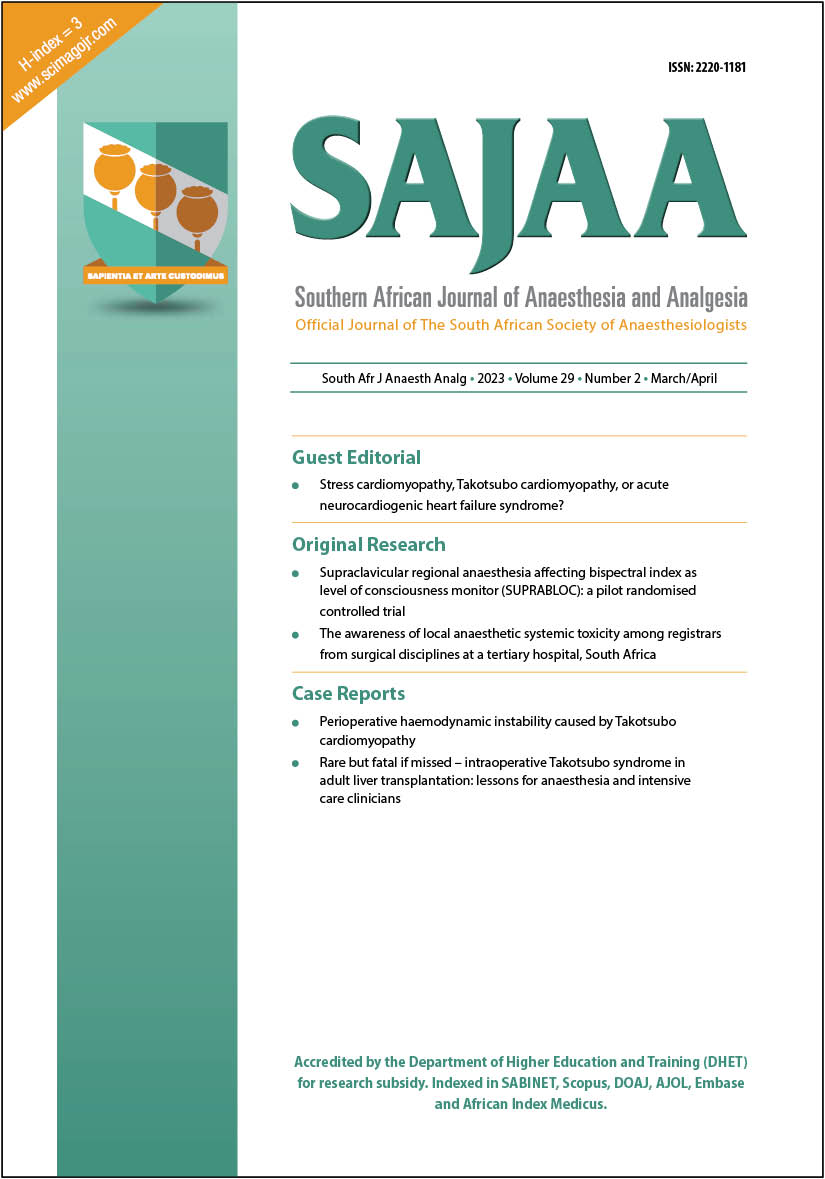Stress cardiomyopathy, Takotsubo cardiomyopathy, or acute neurocardiogenic heart failure syndrome?
Keywords:
stress cardiomyopathy, Takotsubo CardiomyopathyAbstract
Since its first description in Japan in 1990, Takotsubo syndrome, or stress cardiomyopathy (sCMO), goes by many monikers.1 The sCMO syndrome is characterised by a form of acute reversible myocardial injury characterised by transient regional systolic left ventricular (LV) dysfunction in a non-coronary distribution.2 The current definition is that of a clinical syndrome characterised by i) an acute and transient (< 21 days) LV dysfunction that ii) may be related to an emotional or physical stressful event, and iii) the presence of LV regional wall motion abnormalities extending beyond a single coronary artery distribution. This syndrome is now recognised with increasing frequency, with a prevalence of 1–2% of patients presenting with an acute coronary syndrome (ACS).2,3
Downloads
Published
Issue
Section
License
By submitting manuscripts to SAJAA, authors of original articles are assigning copyright to the SA Society of Anaesthesiologists. Authors may use their own work after publication without written permission, provided they acknowledge the original source. Individuals and academic institutions may freely copy and distribute articles published in SAJAA for educational and research purposes without obtaining permission.
The work is licensed under a Creative Commons Attribution-Non-Commercial Works 4.0 South Africa License. The SAJAA does not hold itself responsible for statements made by the authors.

